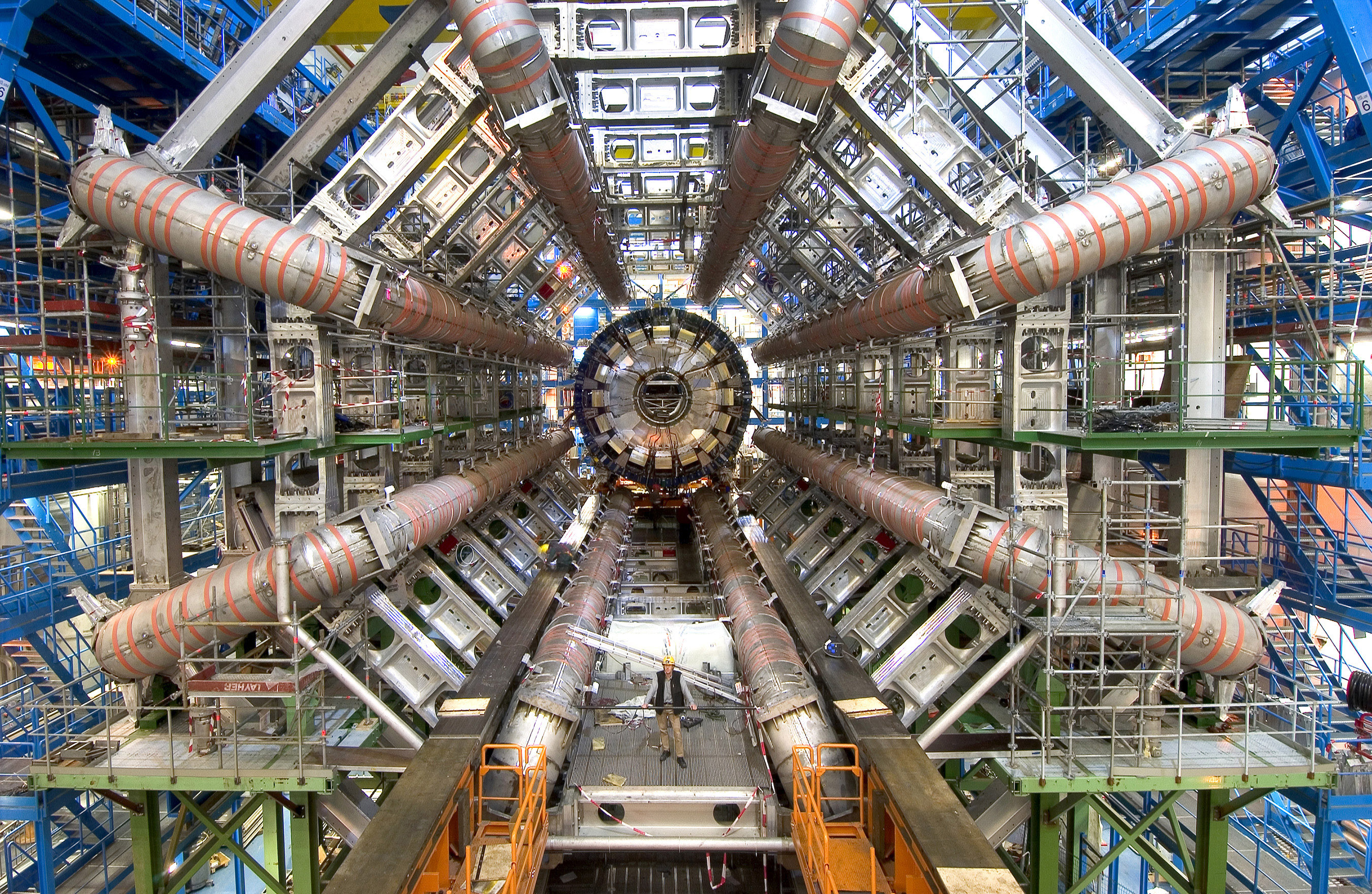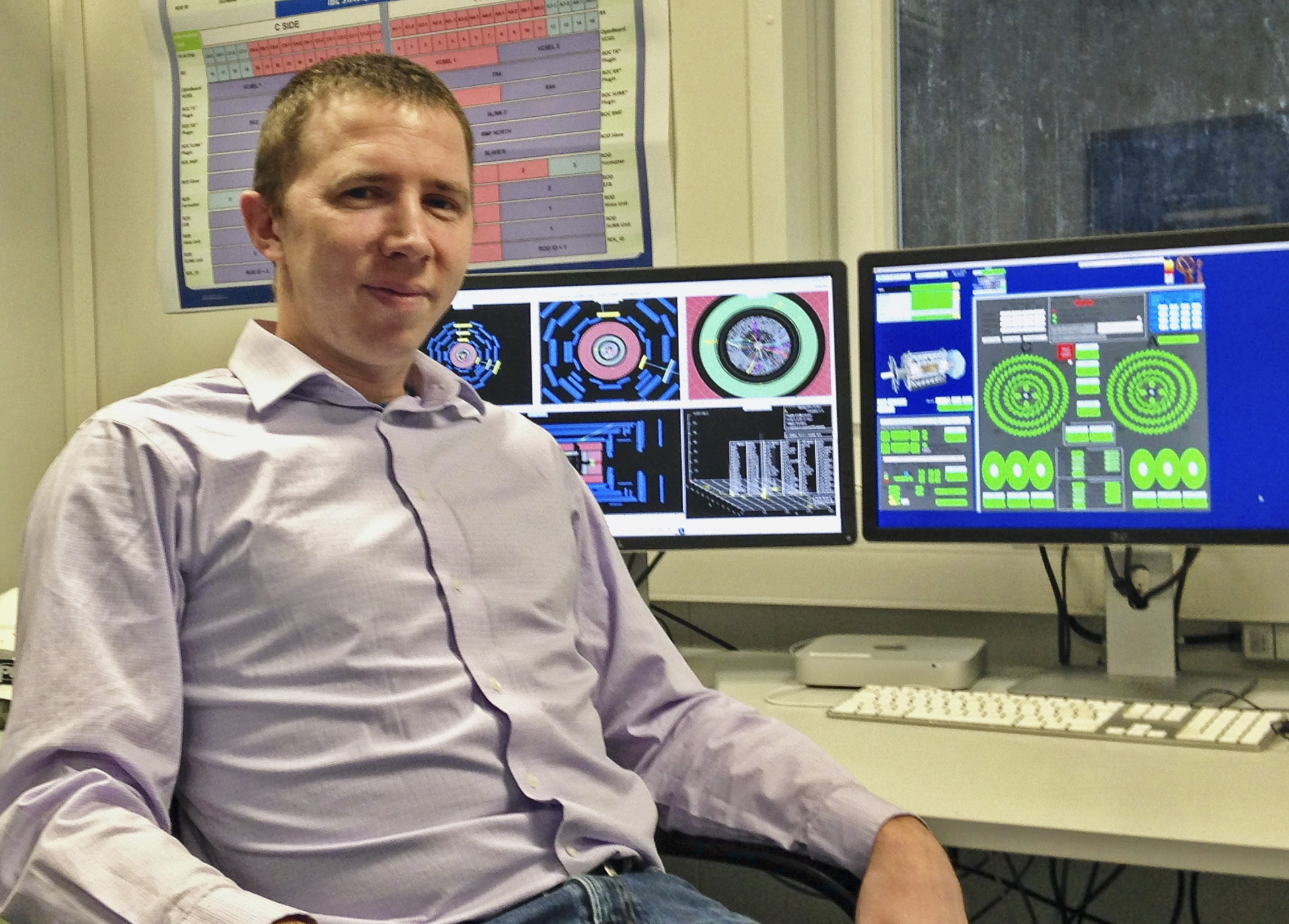 The Large Hadron Collider, a 17-mile ring, lives up to its name.
The Large Hadron Collider, a 17-mile ring, lives up to its name.Researchers at the Large Hadron Collider in Switzerland are conducting cutting-edge experiments in particle physics, and Sacramento State faculty and students are among the participants. Sac State is a member of the ATLAS Experiment – and is unique as the sole undergraduate-only U.S. participant in the collaboration.
The Sacramento State ATLAS program is operated by the University’s Department of Physics and Astronomy (csus.edu/physics) and is funded by a $360,000 National Science Foundation grant that was awarded in 2014 and runs to 2018. The program provides hands-on research experience for undergraduates in particle physics.
The Large Hadron Collider (LHC) is part of the European Organization for Nuclear Research (CERN) located near Geneva. Buried 262 feet below the Swiss and French countryside, the 17-mile ring accelerates protons up to 99.9 percent of the speed of light, sending them colliding into one another at four locations around the ring where detectors record the results. Researchers use the ATLAS detector to observe each collision and the aftermath to try to shed light on the mysteries of matter and the forces that hold it together.
“The ultimate goal is to find the essential building blocks of the universe,” says Sac State Physics Professor Joshua Moss. He has worked nine years with the collider’s ATLAS Experiment, which produced the first observable Higgs boson particle in 2012.
Moss describes the process as crashing two cars together and then determining what the cars initially looked like. But it gets even more complicated. Sometimes the collision creates something new for a very short period of time. “Essentially it’s saying the two come together and form something much larger, like a 747, and then the 747 breaks apart,” Moss says. “We try to reconstruct what the 747 looks like from all the different components.”
 Sacramento State Professor Joshua Moss has nine years’ experience working on the collider’s ATLAS Experiment.
Sacramento State Professor Joshua Moss has nine years’ experience working on the collider’s ATLAS Experiment.Moss began his relationship with the LHC in 2007 after earning his doctorate from the College of William and Mary and taking a job at The Ohio State University. During his postdoctoral work, Moss lived in Switzerland for five years, moving back to Ohio for the birth of his child. He came to Sac State in 2014, in large part because the CSU was looking for a bigger presence in the ATLAS project. He now travels to CERN a few times a year, spending about 10 days there each time.
A total of 180 institutes from 31 nations participate in the project, and Sac State is the only participating U.S. institute that focuses solely on undergraduate researchers.
Sac State’s first participating students – Haley Marez and Caleb Mosakowski – are taking part in work at CERN this year. Through the University’s summer research program, they are sent to CERN, where they attend lectures from top scientists and are paired with mentors who work with them and guide them on their chosen research topics.
“I had the wonderful opportunity to spend 10 weeks last summer working with the ATLAS Experiment,” Marez says.
She worked on the memory board that will be part of a Fast Tracker Trigger being installed in the ATLAS detector. It’s not possible to store data from all of the 40 million proton collisions per second occurring in the collider, so the Fast Tracker Trigger is needed to determine which collisions are interesting and worth further study. “It decides in a microsecond whether that information is worth keeping or if it should be discarded,” Moss says.
“The collider is performing extremely well this year, so we have more data than we have processing power,” Marez adds. “The installation of the Fast Tracker Trigger will help narrow down the amount of data needed to be processed.”
 Sac State students Haley Marez and Caleb Mosakowski at the ATLAS experiment in Switzerland.
Sac State students Haley Marez and Caleb Mosakowski at the ATLAS experiment in Switzerland.Mosakowski’s team is working to find a new particle that could deepen the understanding of physics. “My focus is looking at the different properties of particles that we detect inside the experiment, which can tell us how the particle decays into others,” he says.
In 2014, two students worked at Sac State analyzing data from ATLAS, plus more participated in constructing a cluster of eight computers from scratch to help with the processing.
Moss is a strong supporter of providing these kinds of opportunities for undergraduates. “It’s nice to introduce these concepts to younger students before they get to grad school,” he says. “It gives them an opportunity most students don’t have, plus spending 10 weeks at CERN is never a bad thing.”
His students share that sentiment.
“Working on the ATLAS experiment has given me a clear path to getting my Ph.D., as well as opening the door to continue working in this field,” Mosakowski says.
“I have grown so much as a student, future scientist, and as a professional,” Marez says. “I’m humbled and grateful to have had such a wonderful opportunity to be a part of this team.”
Moss is optimistic that this commitment to the younger students will go a long way in securing continued funding beyond 2018. “This unique situation we’re in – serving undergrads only – that’s one of the missions of the National Science Foundation, so it makes us attractive to them to keep us going,” he says.
For more information on Sacramento State’s Department of Physics and Astronomy, visit csus.edu/physics or call (916) 278-6518. – Craig Koscho
